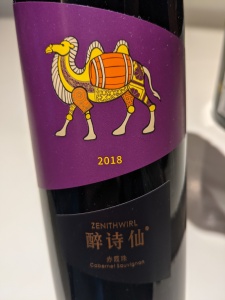Shandong (山东, “East of the Mountains”) is a coastal province in northern China known primarily – to uncultured foreign devils like me, at any rate – for its peanuts. And if I really wracked my brains, I might also have recalled that it’s home to Qingdao (Tsingtao), a former German concession famous for its eponymous Tsingtao beer, that staple of overseas Chinese restaurants everywhere.
Delectable as the combination may be, there’s more to Shandong than peanuts and beer. The local cuisine (鲁菜 Lǔ cài) is considered the forebear of all northern Chinese cooking, so much so that Beijing and Tianjin cuisine are considered mere offshoots of it and trying to differentiate the three is an exercise in drawing lines in sand. The positive spin on that is that now I have the opportunity to sample three times as many things, so let’s get to work!
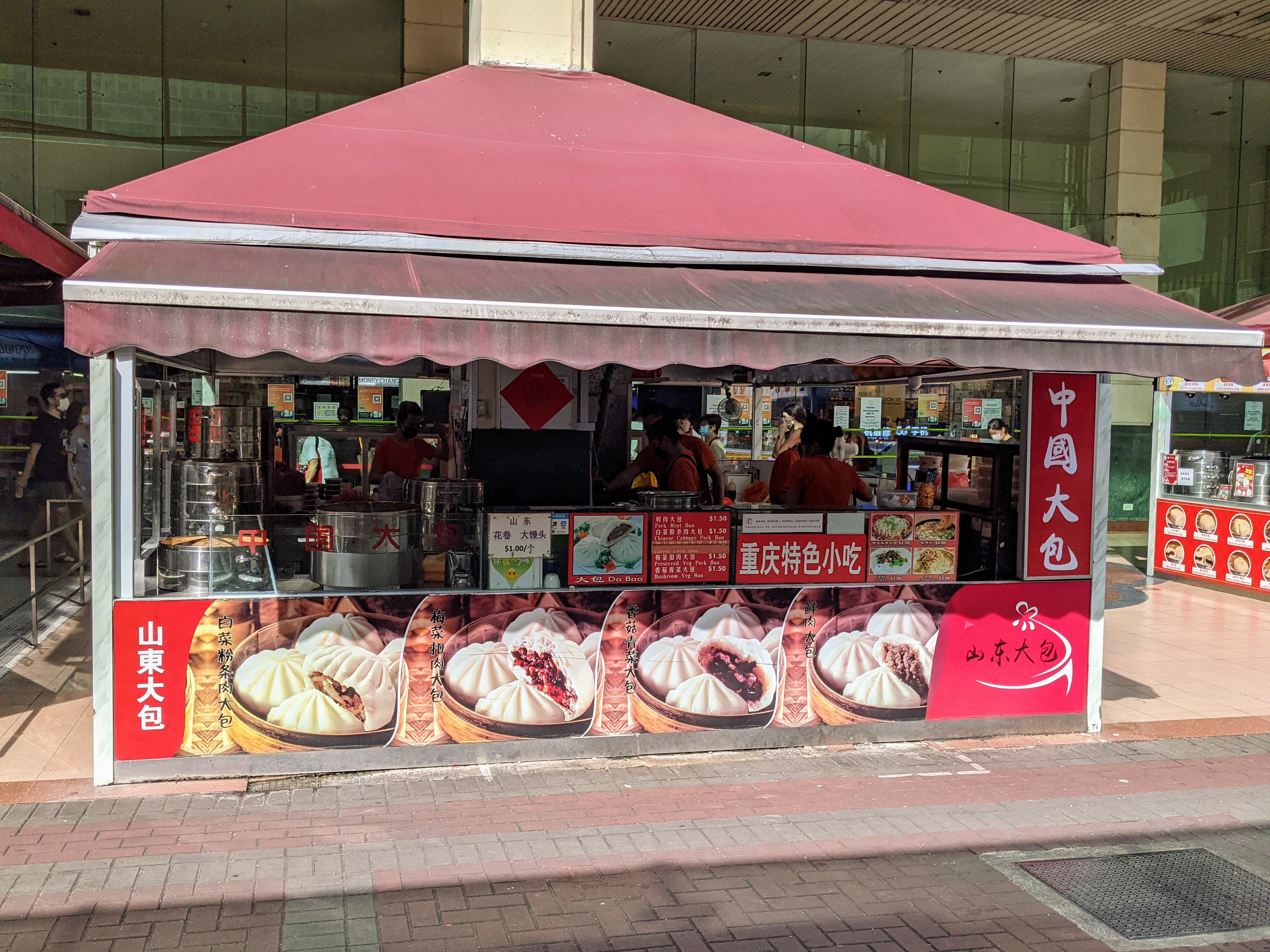

Somewhat to my surprise, there are a number of dedicated Shandong restaurants in Singapore, albeit of varying degrees of authenticity. The most visible brand is Thousand Tastes Shan Dong Da Bao (千味山東大包 Qiānwèi Shāndōng dàbāo), a chain of little hole-in-the-wall shops in MRT stations dishing out Chinese pastries for under $2 a pop. Stuffed, steamed bao (包) buns are eaten across the entire country, but Qingdao has a respectable claim to inventing the “big” (大包 dàbāo) variant stuffed with multiple ingredients. At the giant tent just outside Chinatown MRT Exit C (People’s Park), which offers four different varieties of dabao, I tried out the Chinese Cabbage and Pork Bun (白菜粉条肉大包 báicài fěntiáo ròu dàbāo), which is quite possibly the most filling meal you can get in Singapore for $1.50: a huge, chewy, savoury bun generously stuffed with juicy pork, cabbage and vermicelli. I much prefer this northern style over the sickly sweet, often mushy Cantonese versions, so this was perfect.



At the Woodlands outlet, I tried out the Pancake with Leek & Egg (韭菜鸡蛋盒子 jiǔcài jīdàn hézi, $1.50), which was also grrreat: lots of leek and bits of egg in a thin half-moon wrapper just able to contain the juices inside. My accomplice splurged $2 on the somewhat misnamed Biscuit with Meat & Veg (菜肉火烧 càiròu huǒshāo) and was equally impressed by a chewy, pillowy bun not entirely unlike an English muffin, stuffed generously with pork stewed with five spice and just a hint of chilli. This being an unscheduled stop, I only found out later that huoshao are considered a specifically Shandong delicacy, and the donkey burgers in Hebei are supposed to be made with these. Score! Northern Chinese snacking doesn’t get much better than this.
Shandong is also the home of the Chinese grape wine (葡萄酒 pútáojiǔ) industry. While grape-based liquors have been known in China for millennia, Western-style methods were only introduced in 1892 when Zhang Bishi founded the Changyu (张裕) Pioneer vineyard in Yantai, Shandong. Aimed squarely at the local market, for a long time Chinese wines were sickly sweet and a Taiwanese red I tested around 2007 retains a special place in my memories as the second worst wine I’ve ever tried. (The worst was a 14 pence bottle with a hand-stenciled label picked up from a Maltese farmer.) Have Chinese tastes shifted since? It was time to find out.
Chinese wines aren’t all that easy to find in Singapore, so I placed an order with specialist retailers Ang Leong Huat, kicking off with a $26 bottle of Changyu Zenithwirl Cabernet Sauvignon. The rather awesome English name has no obvious connection to the Chinese name Zuìshīxiān (醉诗仙) or “Drunk Poetry Fairy”, which I’m sure you’ll agree is even better, and the camel on the label hints that this actually hails from Xinjiang, long famous for grapes and thus an obvious place for wineries too. So how was it? Surprisingly decent. It’s definitely a little on the sweet side, but by no means overpoweringly so, and went quite nicely with some not-so-Chinese Brie and Manchego cheeses.




The next stop on the Shandong bus was a visit to the original Kitchener Rd coffee shop of Putien, the Michelin-starred brand famed for its Xinghua cooking and previously covered in the Fujian episode. The location is, frankly, bizarre: Kitchener Rd is in Little India, near Singapore’s dingiest red-light district Desker Rd, and the neighboring shops are mostly dodgy karaoke bars (exhibit A at left). But the shop inside looks just like you’d expect an upscale Chinese restaurant to be, although the artificially colored live fish — I didn’t even know this was a thing now — tip the hat at its colourful surroundings.
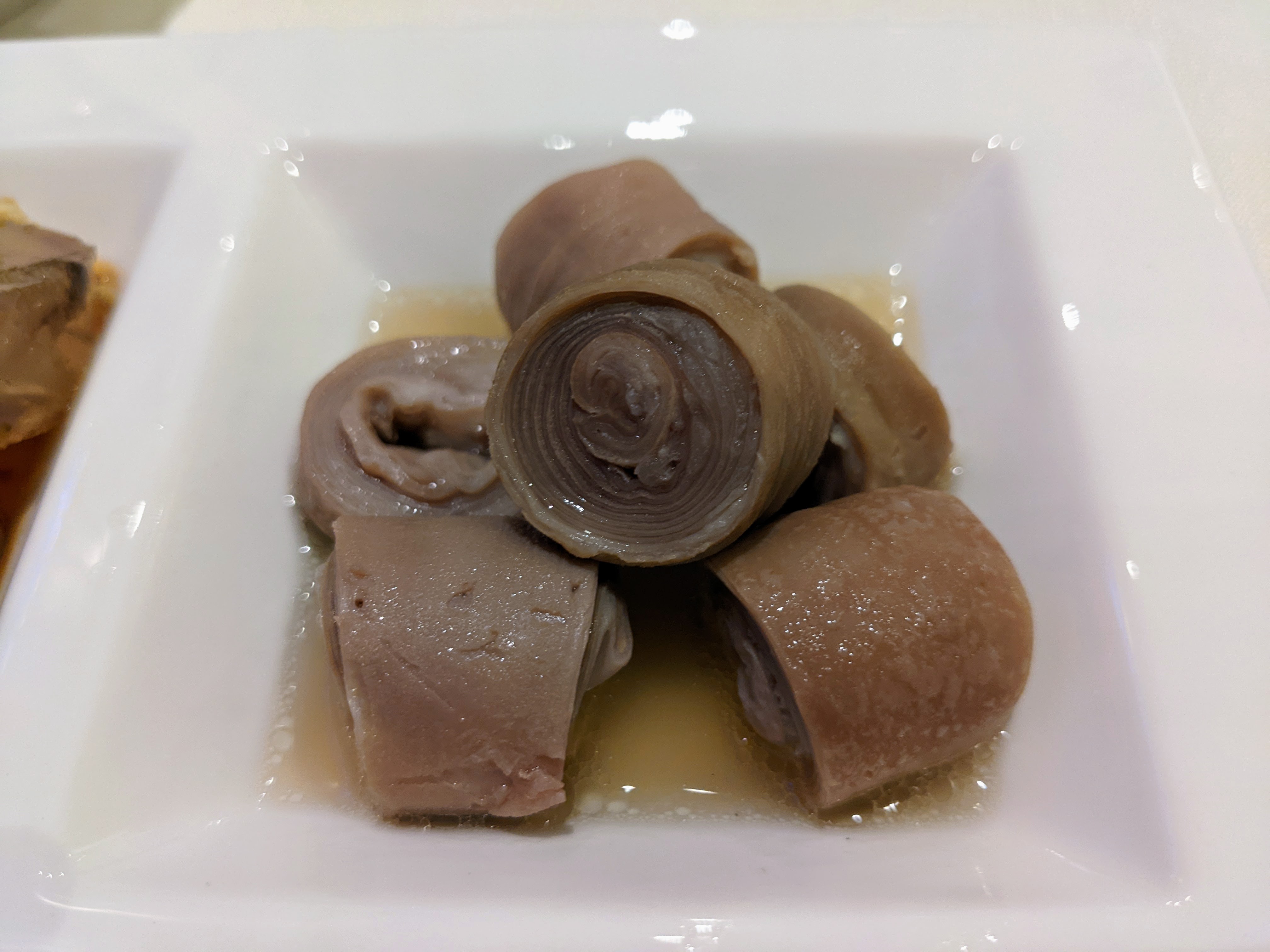
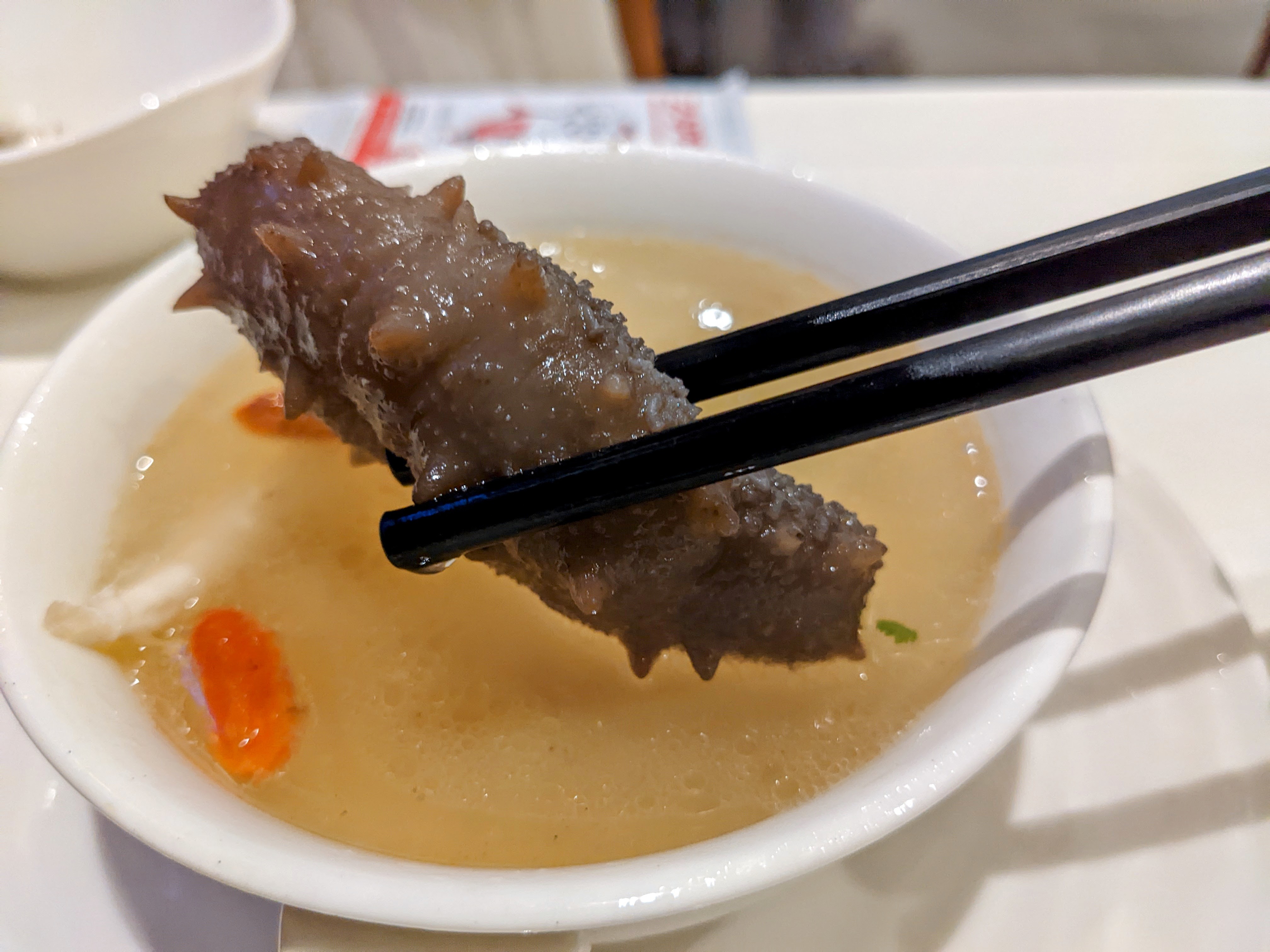
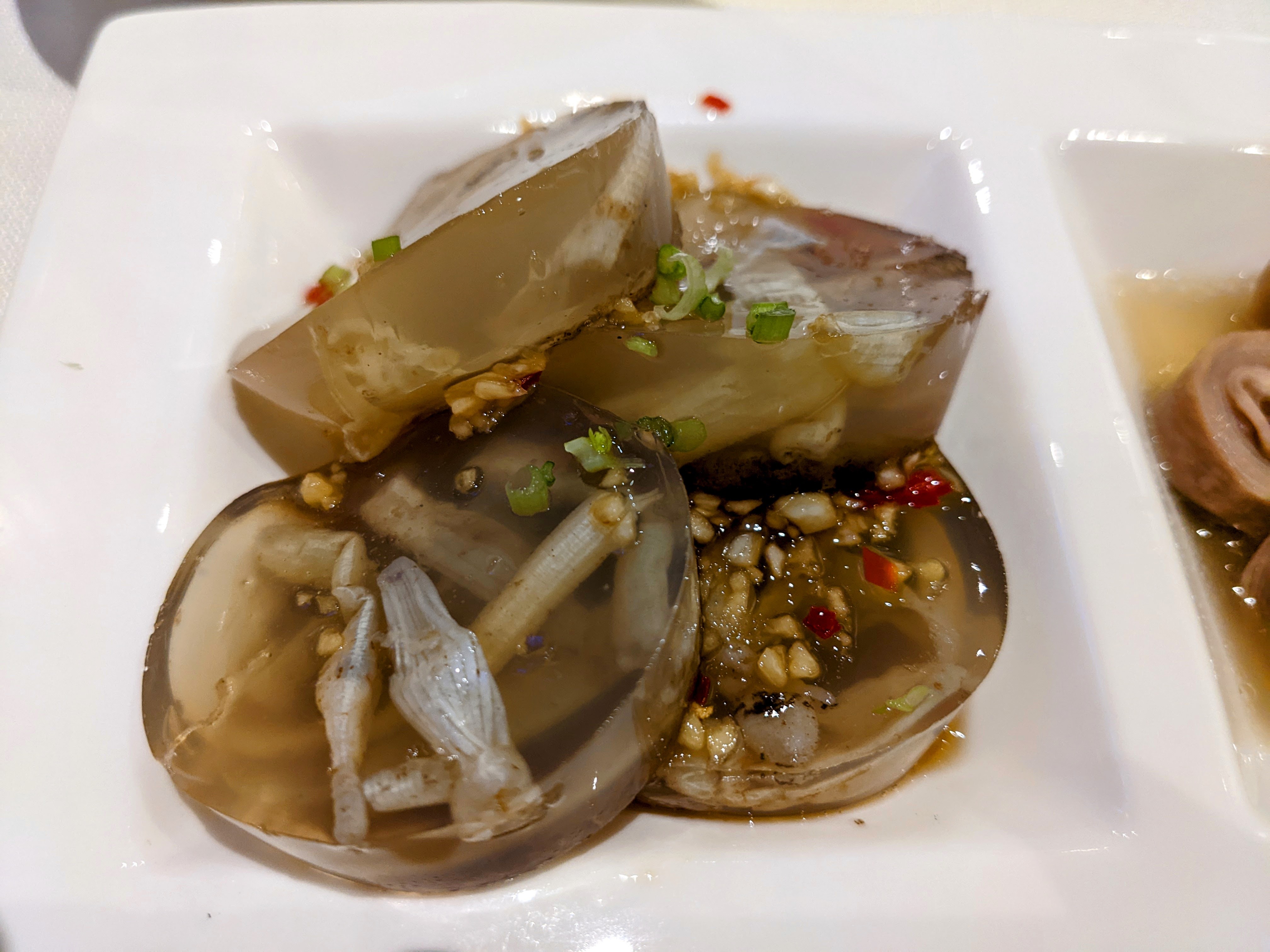
So why am I in a Fujianese restaurant again? Because it’s the only place in Singapore I could find that has Nine-Layer Intestine (九转粉肠), one of Shandong’s best-known dishes. The Shandong version is served in brown sauce, while the Fujianese version is braised in clear sauce and bears a disturbing resemblance to belly buttons. It tastes quite alright, though, a bit chewy but much less than you’d think, and there’s only a hint of intestine funk. Up next was another Shandong ingredient, prickly Japanese sea cucumber (刺参), served here in Chinese soup. Sea cucumbers are much esteemed in China, where they’re known as “sea ginseng” (海参 hǎishēn), but as the Qing-era poet Yuan Mei concluded, they have “little to no taste, are full of sand, and are fishy in smell”. To give credit where credit is due, there was neither sand not fishy smell in Putien’s version, but the end result was crumbly, gelatinous rubber, edible enough but thoroughly tasteless. (The chicken stock was good though!)
Our third starter was the pièce de résistance, which the menu called Chilled Jello Worms (土笋凍 tǔsǔndòng), made from braising and chilling Sipunculus nudus, a species of marine worm, delicately called “earth bamboo” (土笋 tǔsǔn). These are a speciality of Xiamen, Fujian and aren’t really eaten in Shandong, but hey, who’s counting? No cap, these looked pretty gnarly, especially since the worms are kind of curled up in the jellies and stretch out to a solid 5-8 cm if you make the mistake of trying to take a small bite first, but once again the worms have little taste and they’re slathered in enough garlic, chilli and soy to hide any that remains.


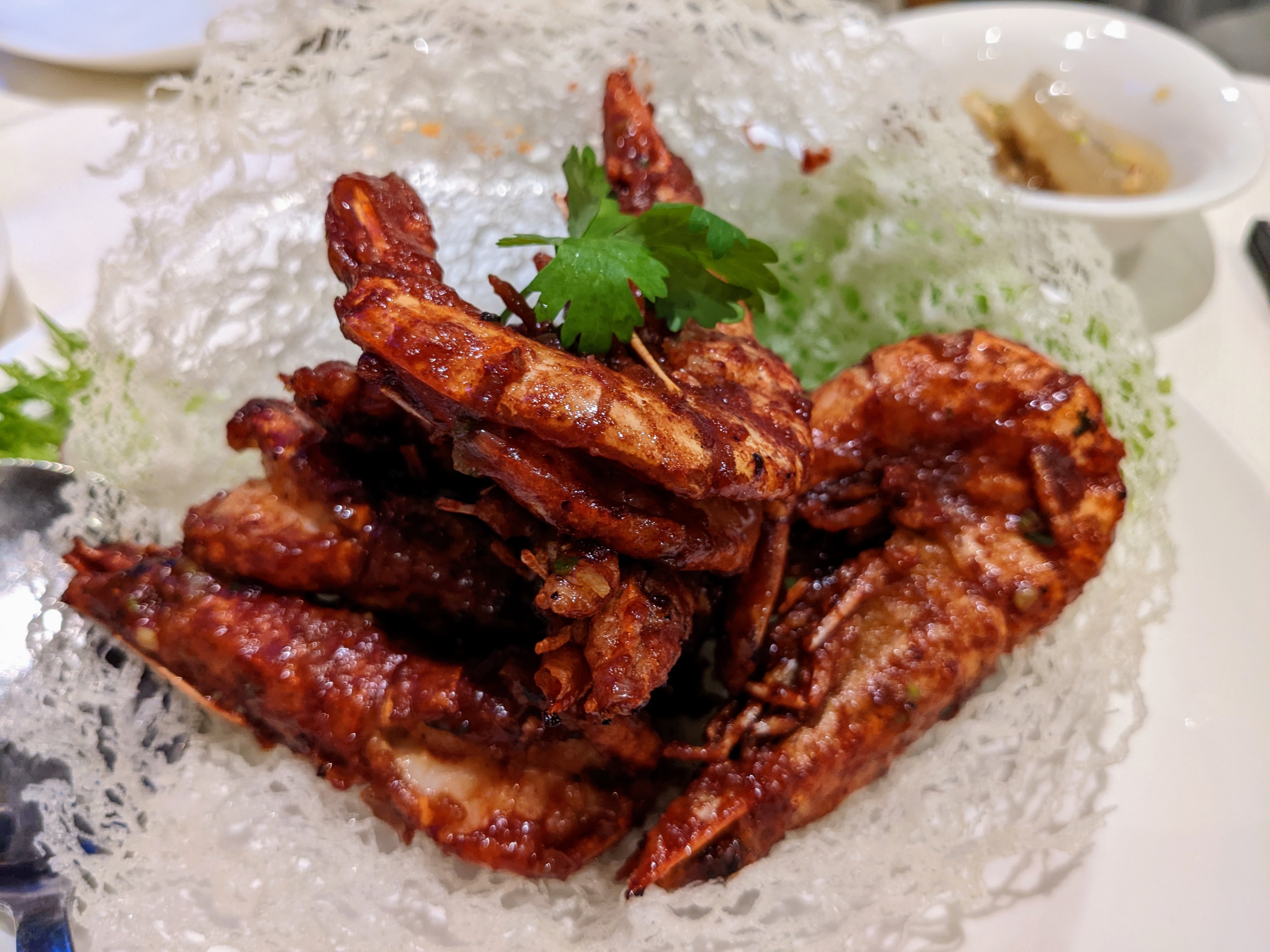
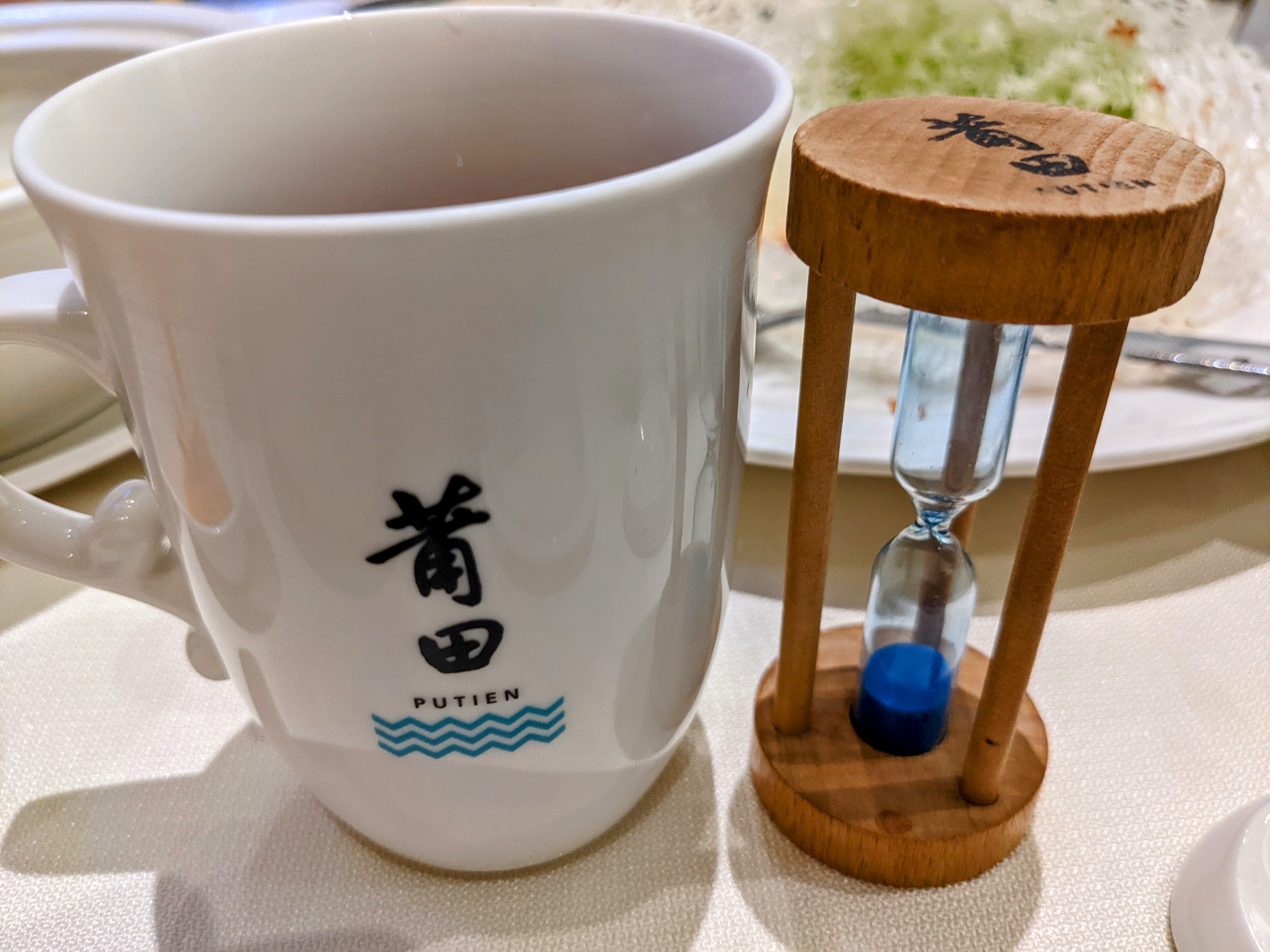

With the Fear Factor qualification round complete it was time to move onto the mains. Putian heavily promotes their 100-Second Stewed Yellow Croaker (百秒黄花鱼), but it was disappointing, quite bony and very bland. The Ca Fen “rubbed noodles” (擦粉) was very close to the one at Xinghua, earthy and porridge-y, while the Fermented Red Rice Wine Prawns (红糟虾) tasted like red rice wine chicken, only harder to eat because the prawns were in their shells. We had some reasonable tea to go with it, complete with an hourglass for timing your steeping, and on the side some deep-fried seaweed and zha cai pickles. Overall, though, the food was a bit of a disappointment.




For my final Shandong experience, I took the family to lunch at Hand in Hand Shandong (手拉手山东菜馆), the sister restaurant of the most delectable Hand in Hand Beijing. Continuing the theme of oddly located Chinese restaurants, it’s located in banker/tourist central Boat Quay, where locals rarely venture, and I’m actually pretty surprised they made it through COVID. They have air-conditioned seating upstairs, but we made the most of the location by sitting al fresco by the riverside and cracked open an obligatory bottle of Tsingtao.


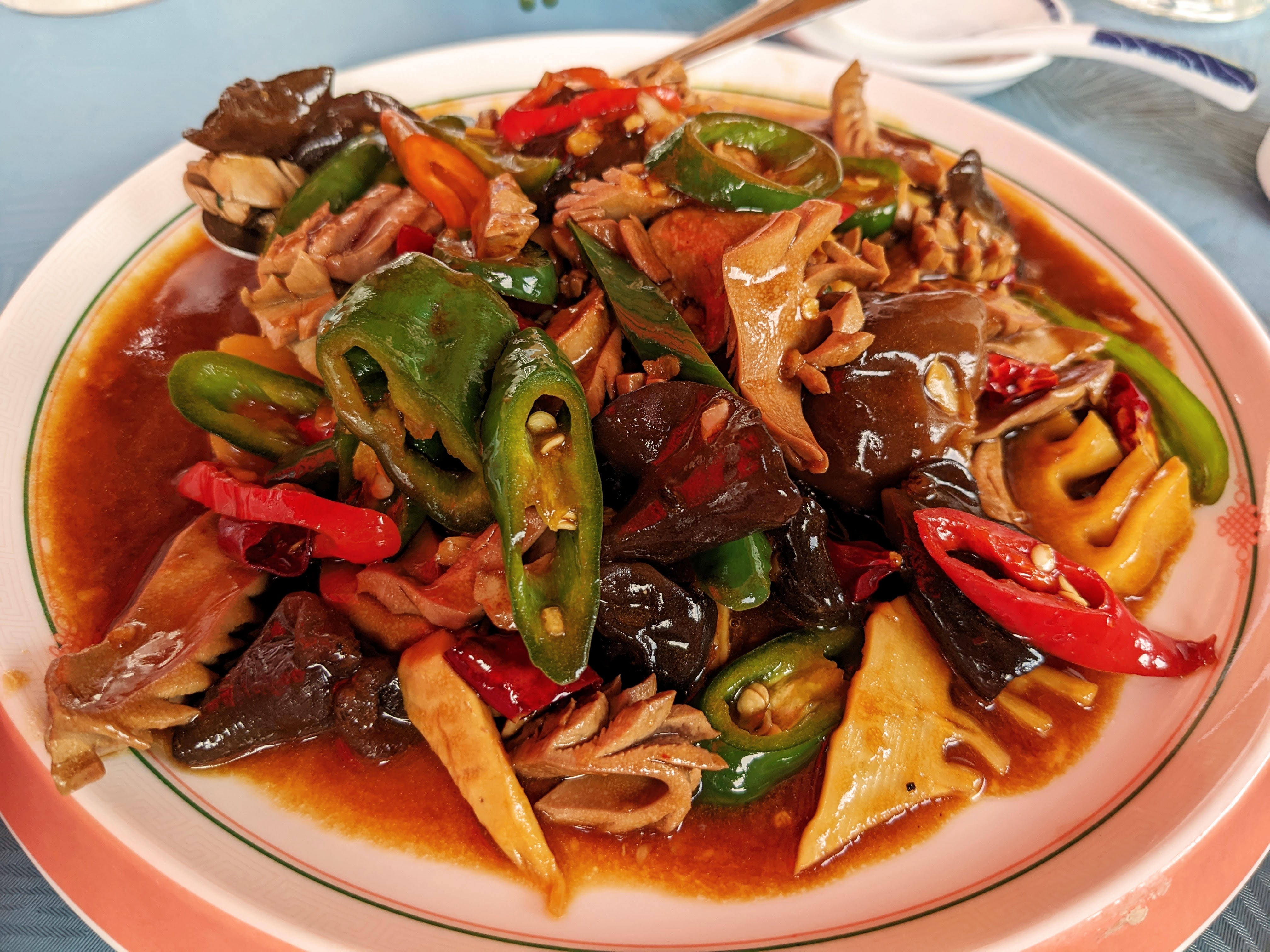
This time I had done my homework by consulting my Qingdao-born ex-colleague Jiang, who wasn’t able to join, but was kind enough to go through the menu in advance and recommend his favourites. We kicked off with Shredded Chinese Cabbage with Jellyfish (白菜丝拌海蜇), which is just what the name says: raw Chinese cabbage (a vegetable I’ve never seen eaten raw in China before!) with chewy, crunchy strips of jellyfish in a garlic-vinegar sauce, and this was my wife’s favourite today. You can never go wrong with red-braised pork (红烧肉), Chairman Mao’s favorite dish and described as such in previous editions of the menu, but now listed as the blander “Shandong Home Braise”. Wrap it up in a mantou bun and feel the glorious fat trickle everywhere!
I also rather enjoyed the Stir Fry Pig Kidney (爆炒腰花) with mild chillies, wood ear fungus and bamboo shoots, cooked with the Shandong technique of “explosive stir-frying” (爆炒 bàochǎo), meaning very quickly with constant motion in a red hot wok, with the kidneys thinly sliced into “flowers” (花) that curl up prettily. This technique, incidentally, is also the source of that infamous menu translating 干爆鸭子 as “Fuck the duck until exploded”: it’s supposed to be duck explosive-cooked until dry (干 gàn), but simplified Chinese unwisely collapsed “dry” (乾) and “stem/do/fuck” (幹) into the single character 干, leading to aisles labeled “干品 / Fuck Goods” in Chinese supermarkets ever since. Oops!

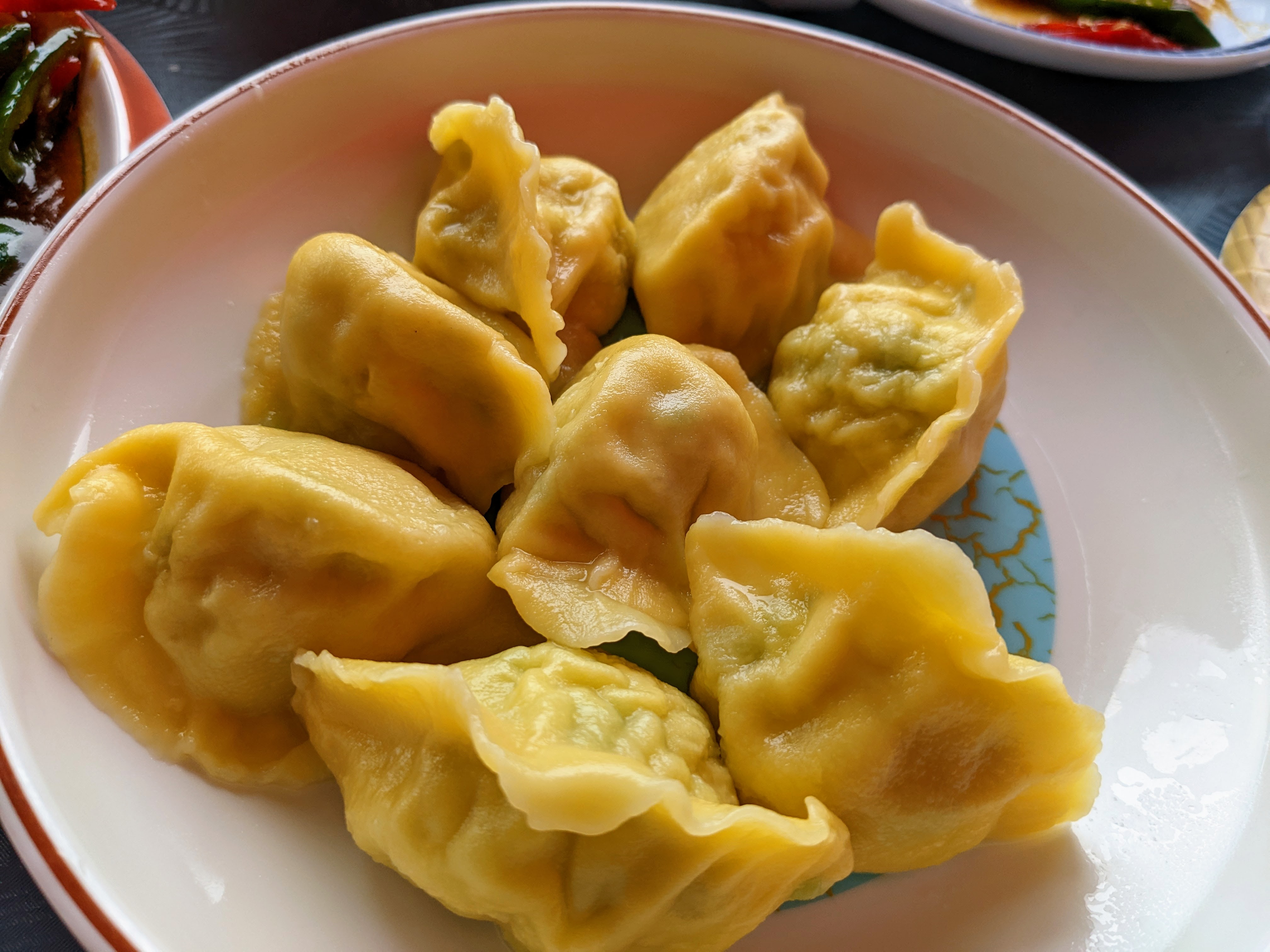

It wouldn’t be Shandong without some dumplings, so on Jiang’s recommendation we tried out the fresh fish dumplings (鲜墨鱼水饺), quite an uncommon filling. The dumplings were, indeed, very fishy, rather resembling the canned fiskebullar that sustained me on a teenage backpacking romp through Norway. Not bad as such, just, well, fishy. The leek and pork “potsticker” dumplings (鲜虾韭菜猪肉锅贴) were competent, if not hugely exciting, and that was pretty much that. I’d been warned in advance that much of the menu was now permanently “Sold Out” and alas, two of Jiang’s favorites, Qingdao Cold Noodles (青岛海菜凉粉) and Cucumber with Snail Meat (黄瓜拌螺肉) were indeed not available.
The good news is, they did still have dessert. Sweet Potatoes in Hot Toffee (拔絲地瓜) is made by deep-frying sweet potatoes and dunking them in a molten sugar solution, not unlike Beijing bingtanghulu (and quite unlike Western toffee, there’s no butter involved). The show happens at your table: the waitress teased the pieces apart, creating the “threads” (絲) of the Chinese name, and then dipped the pieces in ice water to harden the candy shell. Looks simple, but the contrast of textures and flavours worked really nicely, and despite being pretty stuffed we worked out way through almost the entire pile. Definitely a high point to end the meal. Interestingly, the dish is known in Japan as well, where it goes by the odd moniker “university potatoes” (大学芋 daigakuimo) after the dish cropped up in the bookish Tokyo district of Kanda, likely thanks to an enterprising hawker from Shandong.
Total damage was $146 for 4, not as high a markup as you might expect for the area. But there’s no rest for this potato: it’s time to explode the duck and move onto our very last province.
